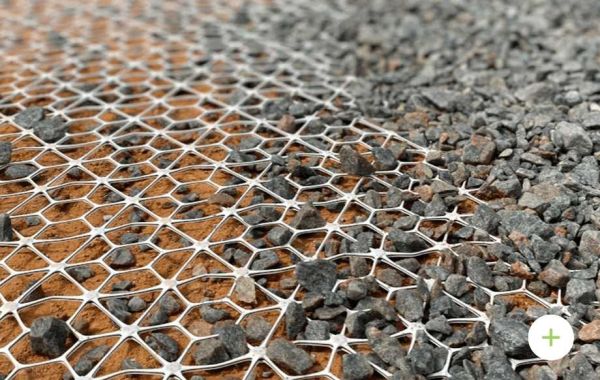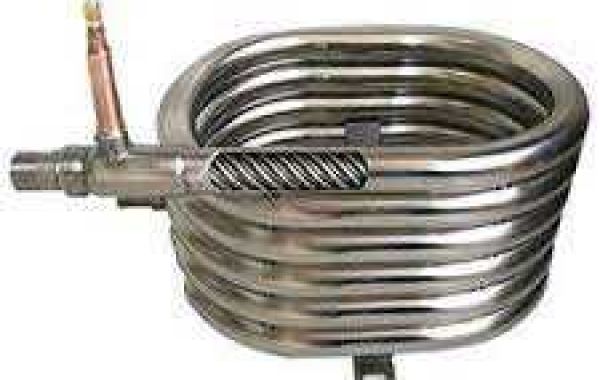A geogrid is a type of geosynthetic material used in civil engineering and construction to reinforce and stabilize soil and aggregate structures. Geogrids are typically made from polymers like polypropylene, polyester, or high-density polyethylene, and they are engineered to have a grid-like structure with openings or apertures. These apertures are designed to allow soil or aggregate to interlock with the geogrid, creating a strong composite material that can distribute loads, reduce settlement, and improve the overall performance of various construction projects. The Geogrid market is estimated to account for USD 708.7 Million in 2017 and is projected to reach USD 1099.2 Million by 2022, at a CAGR of 9.2% from 2017 to 2022. This growth can be attributed to the increased demand for geogrids in infrastructure activities worldwide. In addition, increased cost savings in road construction and maintenance is projected to boost the consumption of geogrids.
Download PDF Brochure: https://www.marketsandmarkets.com/pdfdownloadNew.asp?id=73715104
Geogrids serve several important functions, including:
- Soil Reinforcement: Geogrids are often used to reinforce soil in applications such as retaining walls, embankments, and slopes. They provide additional tensile strength to the soil, enabling it to withstand the stresses and loads placed upon it.
- Pavement Reinforcement: In road construction, geogrids are used to improve the performance and longevity of pavements. They help distribute the loads from traffic and reduce rutting and cracking.
- Erosion Control: Geogrids can be used to control erosion by stabilizing soil on slopes and preventing soil particles from being washed away by water.
- Retaining Walls: Geogrids are often used in the construction of retaining walls to enhance their stability and prevent wall failure.
- Landfill Liners: In landfill applications, geogrids can be used to reinforce the lining system and provide additional stability and containment.
The geogrid industry has been steadily gaining traction in recent years, owing to its critical role in enhancing the stability and performance of various construction projects. This article delves into the geogrid market, exploring its size, the lifespan of geogrids, and the manufacturing processes that drive this essential industry forward.
How Big is the Geogrid Market?
The geogrid market is experiencing significant growth worldwide. Geogrids are a subset of geosynthetic materials, which find applications in civil engineering, road construction, and environmental projects. The global geogrid market size has been expanding due to the rising demand for infrastructure development, urbanization, and the need for sustainable construction practices.
According to industry reports and market research, the geogrid market is expected to continue its growth trajectory. The market's size is influenced by factors such as increased infrastructure investment, environmental concerns, and the growing need for reinforced soil structures and pavement systems. As of the latest available data, the global geogrid market was valued at around $1.4 billion in 2021, and it is projected to witness a compound annual growth rate (CAGR) of approximately 5% in the coming years. This growth underscores the significant role geogrids play in modern construction.
Speak to Analyst: https://www.marketsandmarkets.com/speaktoanalystNew.asp?id=73715104
What is the Lifespan of Geogrids?
The lifespan of geogrids varies depending on the type of material, application, and environmental factors. Geogrids are engineered materials designed to withstand the test of time and perform under extreme conditions. They are often used to provide reinforcement and stabilization in soil and aggregate structures. The typical lifespan of geogrids can range from 20 to 75 years or more, depending on the following factors:
- Material Type: Geogrids are available in various materials, including polypropylene, polyester, and high-density polyethylene. The choice of material affects the geogrid's durability and longevity.
- Environmental Conditions: Geogrids must endure harsh weather conditions, ultraviolet (UV) exposure, and chemical exposure. The specific environmental conditions in which a geogrid is used can impact its lifespan.
- Load and Stress: Geogrids are primarily used for soil stabilization and reinforcement. The loads and stresses they encounter in a particular application will influence their lifespan.
- Installation Quality: Proper installation is crucial for maximizing the lifespan of geogrids. Poor installation can lead to premature failure.
- Maintenance: Routine inspections and maintenance can extend the life of geogrid-reinforced structures.
Overall, geogrids are designed to provide long-term solutions for infrastructure and construction projects, making them a reliable choice for engineers and builders.
Europe is the largest market for geogrids
Europe was the largest market for geogrids, in terms of volume, in 2016. Germany is a key consumer of geogrids in Europe. The increased use of geogrids in infrastructural activities has contributed to the growth of the Geogrid Market in this region. New product launches developments and expansions are the key growth strategies adopted by the leading manufacturers of geogrids in Europe.
Inquire Before Buying: https://www.marketsandmarkets.com/Enquiry_Before_BuyingNew.asp?id=73715104
Geogrid Market Key Players
Tensar (U.S.), Tencate (Netherlands), Maccaferri (Italy), Huesker (Germany), Naue (Germany), Pietrucha (Poland), TMP Geosynthetics (China), Wrekin Products (U.K.), Thrace (Greece), Carthage Mills (U.S.), and Bostd Geosynthetics Qingdao (China) are the key players operating in the Geogrid Market.
Manufacturing of Geogrids
Geogrids are manufactured using a variety of processes, with the specific method often determined by the type of material used. The primary steps involved in the manufacturing of geogrids are as follows:
- Extrusion: For geogrids made from polymers like polypropylene or polyethylene, the extrusion process is commonly used. In this process, the polymer material is melted and then extruded into a flat sheet. This sheet is then stretched in both the machine and transverse directions to form a grid-like pattern.
- Weaving or Knitting: In some cases, geogrids are produced through weaving or knitting high-strength yarns together. This creates a grid structure with interlocking fibers.
- Coating and Laminating: Geogrids may also be created by coating or laminating a high-strength fabric with a polymer material. This process provides additional reinforcement and protection.
Manufacturers carefully select the manufacturing process based on the intended application and material properties. The resulting geogrids are strong, lightweight, and durable, making them ideal for a wide range of civil engineering and construction projects.
In conclusion, the geogrid industry is witnessing significant growth and holds great promise for the construction and infrastructure sectors. With a lifespan that can extend for decades and versatile manufacturing techniques, geogrids are contributing to more resilient and sustainable construction practices. As the world continues to invest in infrastructure and environmental initiatives, the geogrid market is expected to remain a pivotal player in shaping the future of civil engineering.







